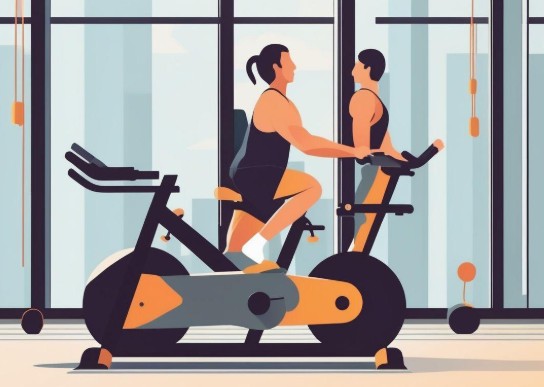What Every Gym Member Should Know About Staying Safe During Workouts
What Every Gym Member Should Know About Staying Safe During Workouts
Gyms are designed to be places of health, motivation, and self-improvement. They can present hazards if members are unaware of potential risks or neglect safe practices.
From gear and equipment misuse to hygiene concerns, understanding how to protect yourself during workouts is as important as the exercise itself.
Staying safe ensures consistent progress and long-term well-being.
Understanding Legal and Safety Responsibilities
When accidents occur in fitness centers, questions of liability often come into play. Gym owners are expected to maintain safe environments by ensuring equipment is properly maintained, floors are free of hazards, and staff are trained to assist members.
Gym members carry responsibility for using equipment correctly and following posted safety guidelines. According to the legal experts at Trapani Law Firm, members who are injured due to faulty equipment or unsafe conditions may have grounds for legal action. However, not all accidents result from negligence on the part of the facility. Often, injuries stem from user error, such as improper lifting techniques or ignoring instructions. Understanding the balance of responsibilities between gyms and their members helps create safer workout spaces and reduces the risk of disputes when accidents occur.
Safe Equipment Usage
One of the most common sources of gym injuries is misuse of equipment.
Machines, free weights, and cardio devices all require specific techniques to be effective and safe.
New members should take advantage of orientations or personal training sessions to learn proper form and familiarize themselves with gym layouts.
Before starting a session, checking the equipment for signs of wear or damage is important. Loose cables, uneven treadmills, or malfunctioning machines can pose serious hazards. Reporting problems to staff immediately helps prevent harm to both yourself and others. Proper warm-ups and gradual progression with weights further reduce the likelihood of strains, sprains, or more severe injuries.
Hygiene and Health Precautions
Gyms are high-traffic environments where equipment is shared by dozens or even hundreds of people each day. This makes them hotspots for germs and infections if hygiene is overlooked.
Wiping down machines and mats before and after use, washing hands regularly, and bringing personal towels are small actions that go a long way in protecting your health.
Wearing appropriate clothing and footwear reduces the chance of skin irritations, blisters, or slips.
Members with existing health conditions should consult healthcare providers before beginning new workout routines to ensure their chosen exercises are safe and beneficial.
Respecting Personal Limits
Overexertion is a frequent cause of injuries among gym-goers…
Especially for those trying to push themselves too quickly.
Respecting your body’s signals is crucial for long-term fitness. Sharp pain, dizziness, or sudden fatigue are signs that something is wrong and should not be ignored.

Gradually building intensity, incorporating rest days, and focusing on proper recovery practices all contribute to sustainable progress. Personal trainers and coaches can provide guidance on structuring safe routines tailored to individual fitness levels. Recognizing that fitness is a long-term journey helps prevent the temptation to sacrifice safety for short-term gains.
Emergency Preparedness and Awareness
Even with the best precautions, accidents can still occur.
Gyms should have clear emergency protocols, accessible first-aid kits, and staff trained in CPR or basic first aid. Members can play a role by familiarizing themselves with emergency exits, identifying staff who can provide help, and knowing how to use basic safety equipment if needed.
Carrying a cell phone with emergency contacts saved, or informing staff of medical conditions such as asthma or allergies, adds an additional layer of preparedness.
Regardless of the 20-30% increased risk of death that the WHO reports, never forget the importance of fitness.
Being aware of your surroundings (and acting quickly when something seems off) can prevent minor incidents from becoming major emergencies.blist
Building a Culture of Safety
Gym safety is a shared responsibility between owners, staff, and members. Creating a culture where cleanliness, courtesy, and respect are prioritized benefits everyone.
Simple actions foster an environment of mutual care and accountability – such as:
- Re-racking weights
- Cleaning up personal belongings
- Offering to spot fellow members
- Disinfecting equipment

Members who see themselves as active participants in maintaining safety are less likely to face injuries and more likely to enjoy positive, motivating experiences. When gyms and members collaborate, the workout environment becomes a place where health and community thrive together.
Staying safe at the gym is about more than following rules, it is about being proactive, informed, and mindful.
From understanding legal responsibilities…
And practicing proper hygiene…
To respecting personal limits and preparing for emergencies…
Every step contributes to a healthier experience.
By keeping safety at the forefront, gym members can focus on achieving their fitness goals without unnecessary setbacks. A safe workout is not just about avoiding injuries; it’s about ensuring that exercise continues to be a sustainable and rewarding part of everyday life.

